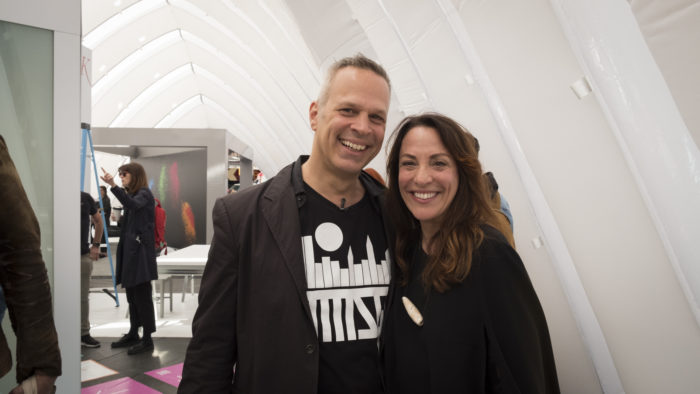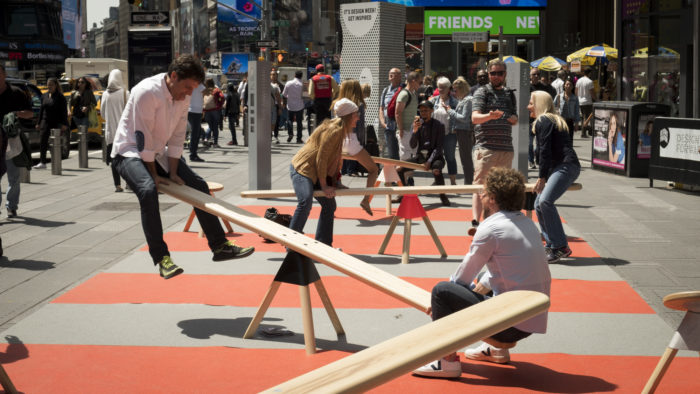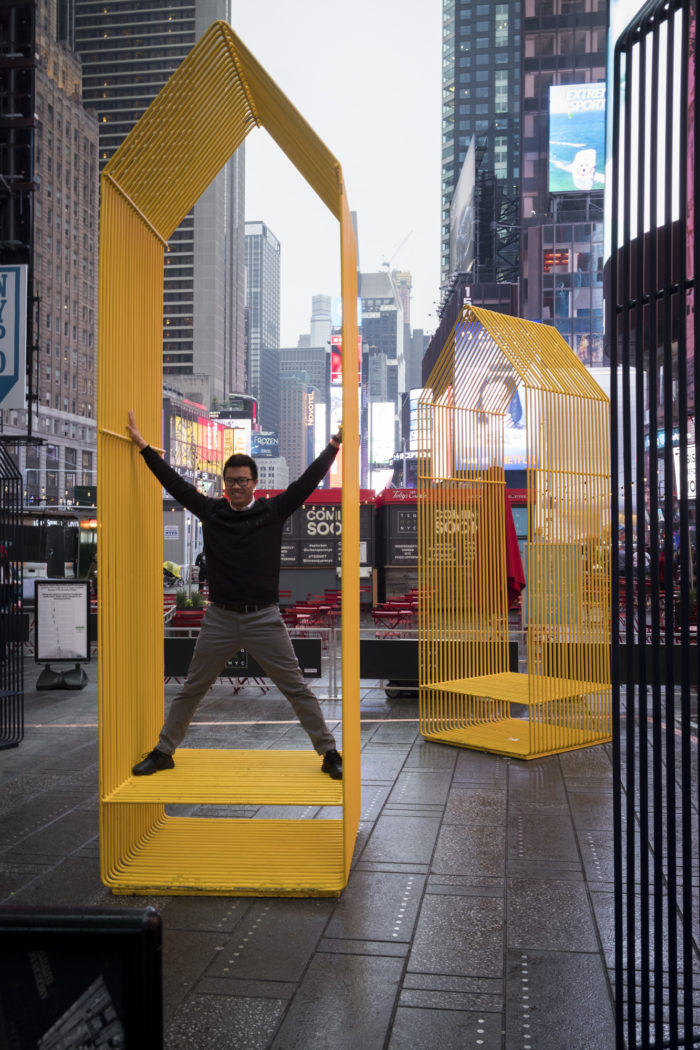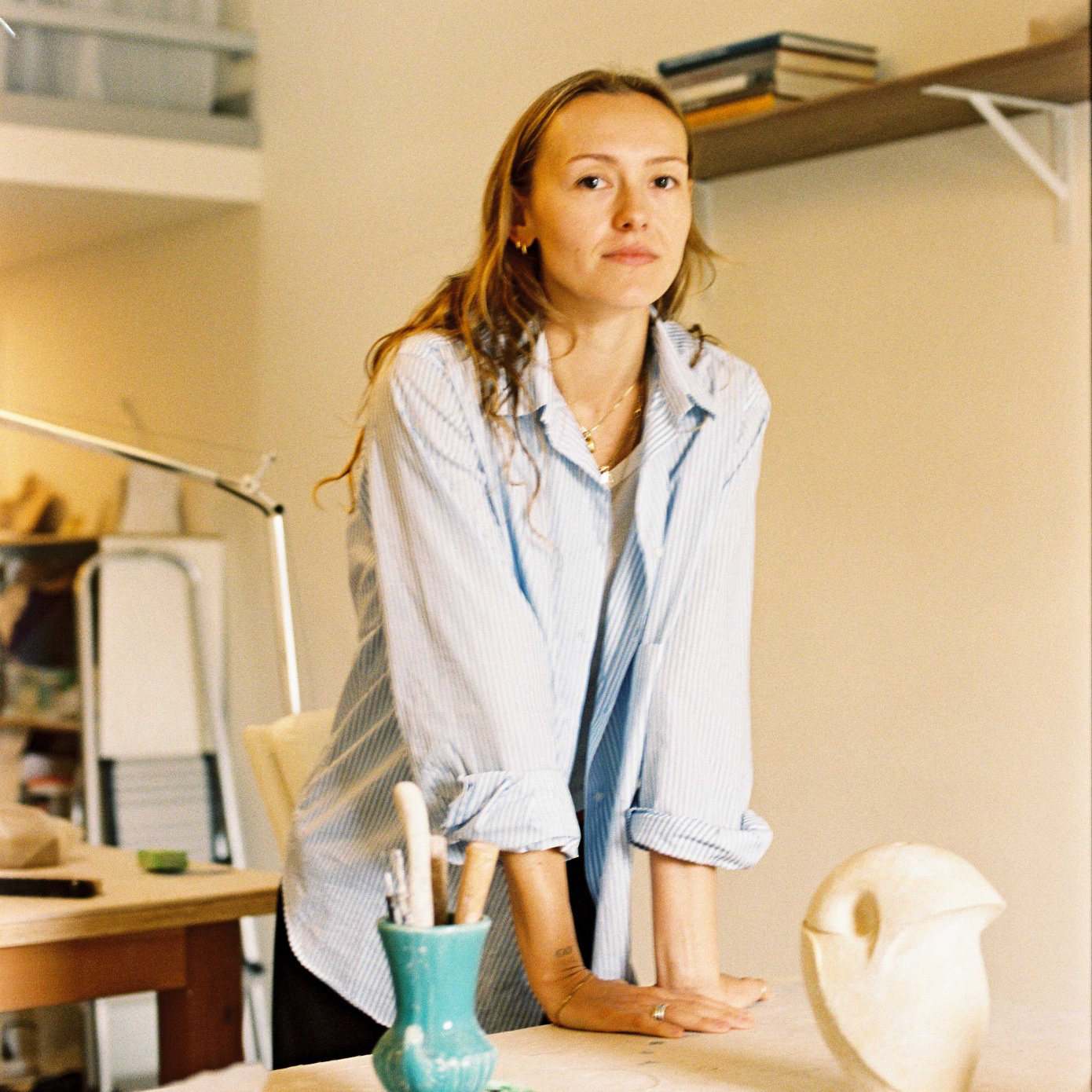
From May 12–20, Design Pavilion is taking over Times Square during NYCxDESIGN, this year breaking boundaries with a massive, inflatable structure created in collaboration with the UK-based design and architecture studio Inflate. This year’s theme for the annual design happening is From This Day Forward, which showcases a wide range of future-conscious design and architecture, from new materials to innovative perspectives. Cultured sat down with Design Pavilion’s Producer and Founder Ilene Shaw and Creative Director Harry Allen to talk about design’s present and future.
You both have backgrounds in design. How does this play into your roles leading Design Pavilion? Ilene Shaw: I began my career as a product designer-maker and through a natural progression I eventually focused more on the marketing of design, which grew into a role of influence in the conception and co-development of the ICFF in its initial decade. I've devoted my career to the advocacy of good design, serving as executive director of IDSA's Worldesign Foundation, promoting design-thinking pedagogy to grades K-12, which led to the co-founding of Operation Design, bringing hands-on creative programs into public school classrooms. I believe strongly that everyone—individuals and corporations—benefits by the problem solving strategies of design and I've always spread that word through all my endeavors. My tradeshow experience has offered me a wide network and broad overview of all the industry's parts worldwide. I've always pondered how do we lift awareness of the importance of design? How do we help expand the demand for our work and services? I've always believed when it comes to design, it is through understanding that we create value. We're just helping people understand through experience.
Harry Allen: For me, Design Pavilion is a logical extension of my 30+ years in the design business. I am an industrial designer by training but for many years I also designed interiors. Design Pavilion brings all of this experience to bear. In speaking to Ilene, when she was just starting Design Pavilion, I realized that it aligned perfectly with my broader mission. We want to educate the public about design and all of the wonderful things it can do. Design is so broad—and not very well understood. Even the other night when I was standing out here telling people about what we were doing as we are setting up, people were asking me if the Design Pavilion was about fashion. Of course we would welcome the fashion world, but the Design Pavilion is about all of the design industries including industrial design, architecture, furniture design and graphic design—and most people do not know much about these disciplines.

How do you make design accessible to a wide audience? Shaw: You bring it right to them and you entice them to take part and take notice. We're bringing the “mountain” to them and breaking down the divide. Museums play the important role of collecting, archiving and sharing pertinent and relevant work—and an already interested and aware audience visits them. At Design Pavilion, people take part; they touch, play and experience many current and future museum collection items, and they love them and might have never known of them, had they not found them at Design Pavilion.
Allen: We want to bring design to the public, and what better way to do that than in Times Square. It’s the heart of the commercial universe, and design is a very important component to commerce. In addition it’s also an area of culture and entertainment. At Design Pavilion we aim to tell stories with design and in doing so we need to put on a bit of a show.
In what ways are you expecting social media and technology to play a role, for example with the collaboration with Nasdaq? Shaw: We're using social media as everyone else does, everyday, sharing what we find. Nasdaq has been a remarkable partner allowing us to connect with business through their platforms and business to connect to us. Even the most sophisticated business leaders are not yet aware of the impact design can play in their companies on many levels, yet on the other hand there are some who have been embracing designers as their secret weapons against the competition. It's all so exciting!
Allen: All of our amazing media partners this year enable us to tell our story to a larger audience. My hope is that if people learn about design and how to incorporate it into their lives, people will become as enthusiastic about design as I am. On all levels, I hope that the general populace will learn to enrich their lives with design, to invite more elevated design into their homes, but I also hope that more business people will learn to leverage design to differentiate themselves and innovate. I don’t think most people realize the potential of the storytelling aspect of design to solve problems or sell products.

Do you see the future of design moving towards a less “industrial” and more organic style, as with the inflatable pavilion created with Inflate? Shaw: The future of design will encompass it all: the comfort and familiarity of the organic, the digital world through VR and AR, sensory developments responding to, imitating and triggering our human senses, new materials—natural and high tech. The future is as expansive as the imaginations of our inventors, engineers and designers.
Allen: It’s funny that you ask that question in that way because Arc, the inflatable pavilion, is actually as much product design as it is architecture. Inflate, if all goes well, will make many of these structures of different sizes, colors and finishes—and for many different purposes. Architecture is static in that you build a building and it stays put, but Inflate has the added benefit of being made in multiples, being movable and customizable—in that way it’s more like product design.
I’m not sure if you can look at this one project and see the future in it. I’m actually a big fan of rational architecture; what Inflate does best is organic and filled with air. This project is a hybrid of these two aesthetics. Many of my ideas for Inflate were more rational. Nick Crosbie, Inflate'sowner, was the great mediator. In the end this project presents a very interesting new aesthetic for me and for Inflate. It’s very appropriate for the material, but it also defines some new territory. It feels very timeless to me.

Can you elaborate on the significance of situating Design Pavilion in Times Square? Shaw: In Times Square, we are reaching more people in one place and at one time, than is possible anywhere else in the world—that's significant. Times Square is a cross section of all nationalities and walks of life. It's wild at moments and yet, there is such magic in the obvious delight and enthusiasm we see in most visitors. They are so engaged and it's amazing to watch. It's witnessing the discovery and intrigue of learning something new, trying something new and seeing something for the first time. Times Square is the center of the world and our city, with its challenges and brilliance. With such an event as Design Pavilion, it brings out only the good. That too is significant. Design is for people and they are here.
Allen: The design world is very good at impressing itself. Most of the shows during NYCxDESIGN are business to business. Of course, it’s a fun business so I would encourage everyone to go see all of the shows that go on during this period, but Ilene and I both feel that design and the stories it can tell have broader appeal. Our partnership with the Times Square Alliance allows us to reach millions. Last year in our four days in Time Square, on three blocks we had about 1 million people; this year on all five blocks for nine days we are giving a conservative estimate of 3 million. The population in Times Square is very diverse, it includes tourists from all over the world, business people from the area—we are expecting that the design community will come up also. We have some amazing designers and companies showing with us this year.




